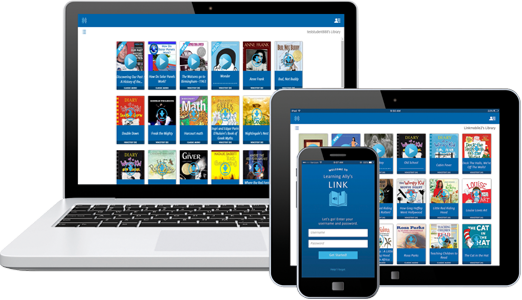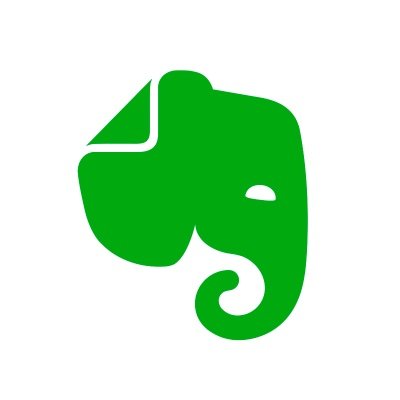Author: Chase E Iaconelli
Date: 07/15/2024
As one considers the evolving landscape of technology in education, there is a noticeable shift in the way that it is being used and developed to reach the needs of diverse learners. In the advent of educational technology, it largely served as a means of enhanced entertainment to the students and enabling teachers to deliver lessons with ease. From the emergence of projectors and computers to the contemporary uses of tablets, phone applications and Artificial Intelligence, the steady progression of innovative and intuitive technology in schools has broadened the capabilities of student accomplishment and has removed the limit from which teachers can inspire their students to learn and grow. One of the avenues that have in recent years became open to teachers and students is the use of Assistive Technology (AT) and with its introduction, came a new wave of protentional for not merely conventional purposes, but to accommodate the needs of neuro-divergent and diverse learners. AT incredibly levels the educational playing field when one considers the innumerable reasons as to why a student might need assistance with writing, reading, and expressing themselves due to a physical, mental, or learning disability. In this blog, we will look at seven different examples of Assistive Technology and how the deficits and difficulties of students are met with a new age of inclusive and groundbreaking technology.
Tool 1: Learning Ally
Growing up with Dyslexia, it was always a dreaded moment when I was called in to read the next few paragraphs during a class reading session. The feeling of fear and uncertainty would creep in, not knowing if I would be able to read fluently or at all. Learning Ally would have saved me from such anxieties, as it is a platform designed specifically to aid in the difficulties of reading in comprehensive ways. With thousands of books in its reserves, Learning Ally delivers a reading experience that is guided with an audio book and text options that enhance the focus and comprehension of the reading. Students can manipulate the platform to change the text size, font, color, and background so that it is fitted to their necessary learning styles. As the audio book is reads the chapter, the student can follow along and even slow the speed down of the audio so that the student might attempt to read alongside it but at their own level. The function of the program is rudimentary in its design, yet perfectly simple in its user experience and demonstrated effectiveness for those with dyslexia and learning disabilities. Not only does it bolster autonomy and a passion for reading, but it is an accessibility that fundamentally changes the way students learn.


Tool 2: Remember the Milk
It can be hard to manage all the assignments, responsibilities, and demands of a student, especially if that student struggles with executive functioning, a common issue of those with ADHD. There are many tired and true methods of staying on track of tasks for school. Many students choose to keep a physical Calander and write down the assignments, others rely on the native iPhone Calanders to manage their schedules. Yet, very few options seem as fitted to the life of a student as Rember the Milk. This application tracks deadlines through the traditional means of calendaring, yet there is an understanding of the company that produced the app of what is most important to students. You can set priorities to each task, along with a description of the assignment details and designate them by class title. But where it truly separates itself from other time management and task organizers is its ability to set reminders and notifications across different platforms, whether that be email or Twitter (X). Through its grounded notifications, it can reliably and consistently remind students of upcoming assignments, and using advanced programing, create assignment notifications to be reoccurring as well. Remember the Milk is a fantastic app that can increase the student’s ability to stay on top of their responsibilities, cultivate the art of effectively utilizing their time, and develop the skills of organization that transcends the priorities of the classroom and can broadly impact their lives in a positive way.

Tool 3: Mindly
When it comes to taking notes, every student has their own beliefs and preferences on the best ways that work for them. Some maintain that handwritten notes are more reliable in recording their thoughts and the dictations of the teacher, other feel that typing notes is better. Mindly enters the chat with something new and refreshing, that combines the ethics of both methods. Brainstorming is an essential part of note taking, and Mindly harnesses the power of brainstorming to create an interactive mind map where ideas can flow onto the screen in an organic and natural way. Once the student narrows in on a theme or direction, Mindly crafts a landscape that gives students the tools customize their writing with images, links to sources and creative structures to connect one idea to another. For those with ADHD and other neuro-developmental struggles, Mindly presents opportunities to manifest their thoughts onto the screen in the often chaotic and scrambled processes of their mind. With handwritten and typed notes, students are free to express themselves but with the reasonable constraints of the platform. Mindly removes those constraints and unshackles students in their articulation and expression of their ideas.

Tool 4: Microsoft Office Lens
In the past decade, American education has embraced the ethic and principles of inclusive education, as the last true frontier of Civil Rights extends to the limitations and inequities of students with learning disabilities. In keeping with the embrace of inclusive education. Microsoft Office Lens stands as one of the primary mediums to help students with visual or physical difficulties of annotating notes and recording their thoughts. The way it works is that students can take pictures of the whiteboard, handouts, or any printed material and Microsoft Office Lens will generate a page with the written text from the photos. Documents that are produced are able to be turned into PDFs and editable pages where students can then configure the material in a specific and pointed way. This makes it easier to consume class content and also allows the student to interact with the material in their own way, an approach that speaks to inclusive nature of the platform and its wide applicability to those who need assistance. Additionally, one of Microsoft Office Lens most prominent features id the Optical Character Recognition platform. This harnesses advanced machine learning software to edit images and text based on the pre-conditions of the user. If a student has poor eyesight, then the application will take that into account and generate a document with enlarged text and an increased brightness setting. As time goes on, Microsoft Office Lens will evolve and grow in its capabilities and potential for students and their specific accessibility needs.

Tool 5: Graphing Calculator by Mathlab
There is a binary expression of math amongst students; it is either understood, yet challenging, or not understood and challenging. For those who fall into the ladder category, the Graphing Calculator by Mathlab might be just the thing they need to overcome their persistent struggles with math and learning disabilities such as Dyscalculia. Mathlab’s graphing calculator introduces complex equations in a way to makes it easier for students to understand through visual representations of numbers, quantities, variables and geometry. This is no ordinary calculator, as its primary functions extend beyond its traditional form, allowing students to plot graphs, conceptualize the relationships of equations and even provides an explanation of the problems properties. In addition to these functions, the Graphing Calculator by Mathlab also has interactive tools that break down the problems through a step-by-step process and encourage the students to confront their difficulties in an elementary way. Students that use this application will come to find that they are not only learning new ways to solve the equations and sidestep their difficulties, but they will likely also enjoy their experience doing it. From a teacher’s perspective, this provides an opportunity for their students to stay ahead of the curve by allowing them to engage with the material in a differentiated and unique way.

Tool 6: Evernote
Writing can be a very personal endeavor and because of this, the landscape in which a person records their writing should be personal as well, that is where Evernote shines. In its simple, yet vivacious interface, Evernote is what any reliable note taking app should be, reliable in storing, categorizing and sharing of the students work, but it does so with a unique personalization. With its cross-device syncing, students can go from their laptop, phone, tablet, and even VR headset to pick up where they left off. The apps platform brings a diverse set of templates, fonts, folders, and even uses AI to summarize notes from lectures as well. Evernote enables students to organize their notes with intention, collaborate through the syncing capabilities, and hold dominion over the vast collection of their notes. As it relates to the accessibility features of the app, there are standard settings to increase contrast, text size, and dictation, but it also is a platform for a much more versatile and mailable experience for a student who best thrives when they are able to configure and shape their notes and writing in their own way.


Tool 7: Action Blocks + Dragon Dictation
Modern American classrooms are diverse places, with students coming from all walks of life, who possess different strengths and weaknesses. Action Blocks is an app that allows students to create a programable button to be used in any that student wants. Once programed, these buttons can be used to aid students in organizing their note taking or research, or even to set an alarm before going into a study session. The possibilities of the Action Blocks are literally endless, it is especially the case when considering how limited students are with physical disabilities. Action Blocks can be programed to perform a voice recording, if a student in a wheelchair is also nonverbal, they can have the teacher record words like “bathroom please” so that they can communicate their basic needs. Dragon Dictation adds to the versatility to these accessibility tools, it stands as one of the most accurate voices annotations on the market. Its accuracy not only stands on the reputation it has earned from healthcare professionals and special education educators, but it’s efficiency and communicative results truly empower students to live and learn free of limitations.

